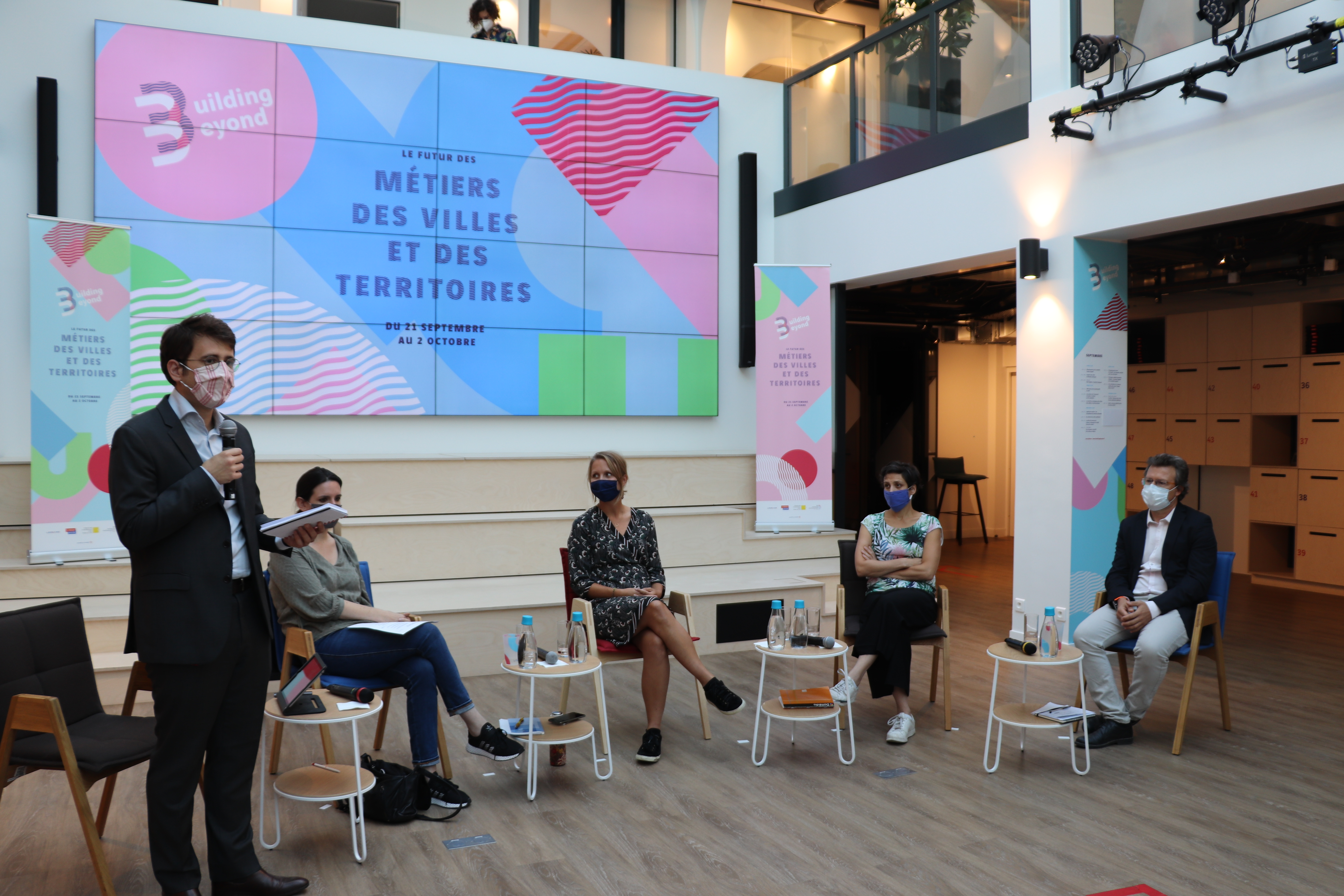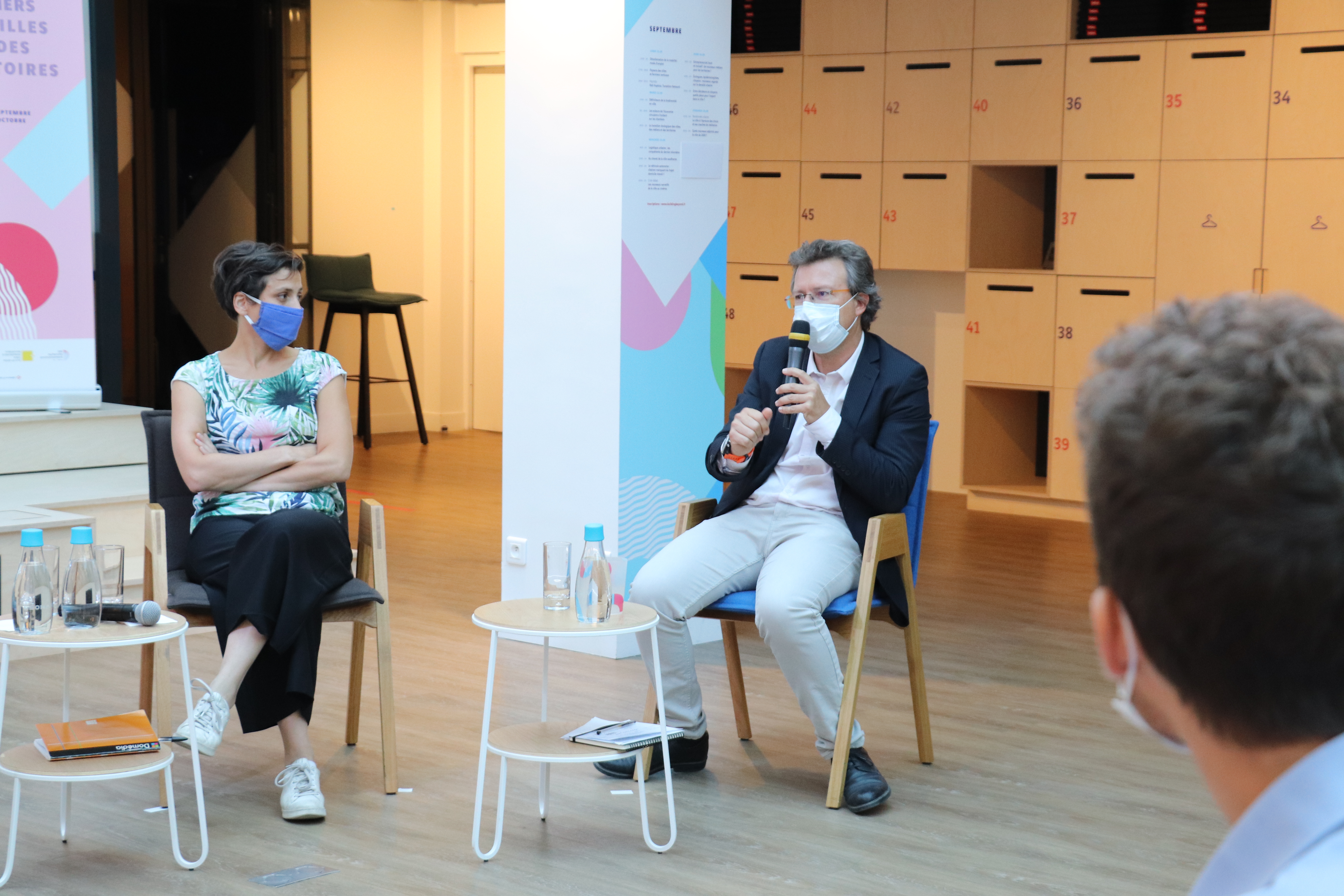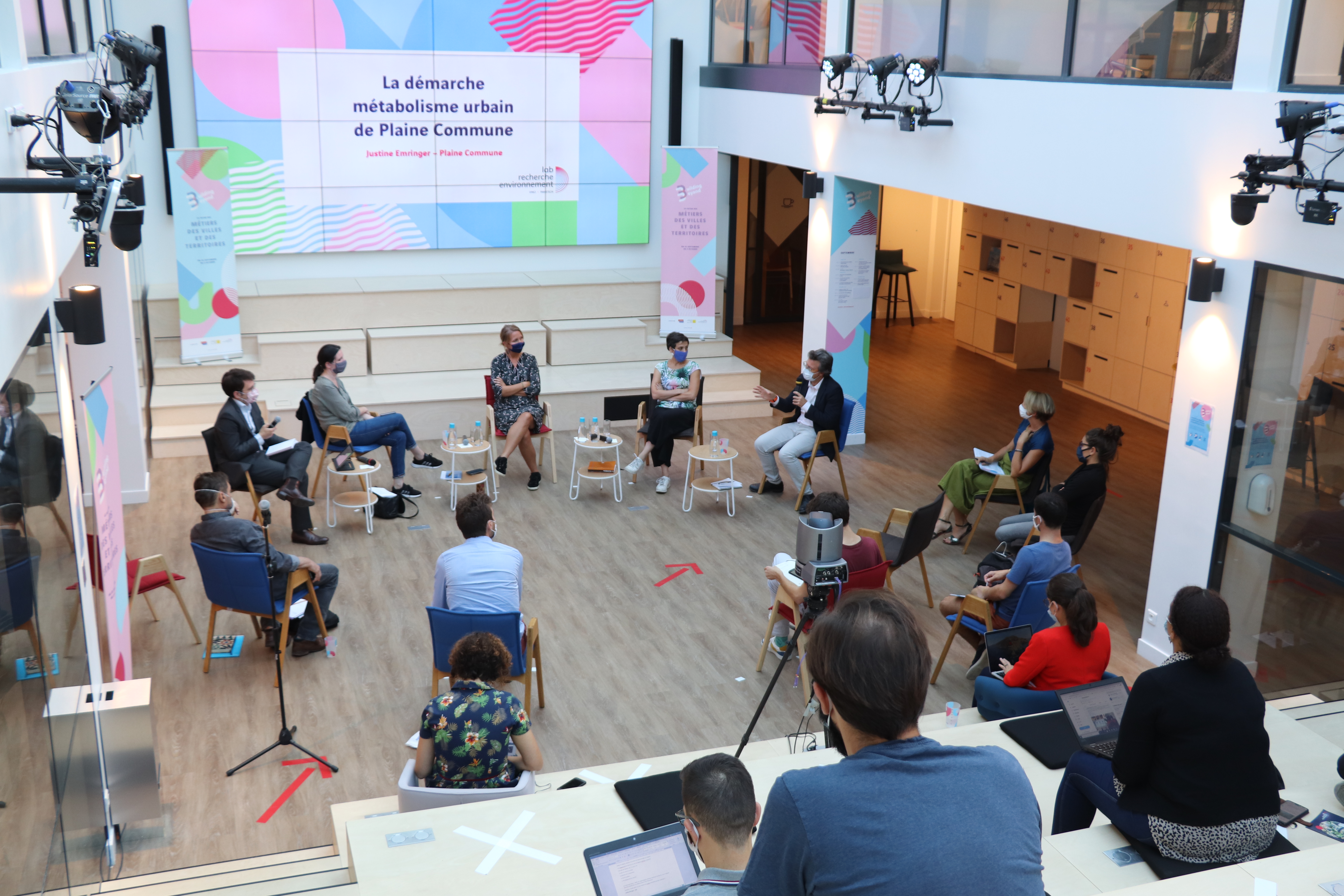This talk was hosted by Maxime Trocmé, VINCI’s R&D Deployment Director, during Leonard’s third Building Beyond festival. It was organised in partnership with VINCI’s lab recherche environnement and brought together an extraordinary panel of people working to foster the circular economy in construction.

A talk on waste in the building and civil engineering sector in France
Building and civil engineering account for 70% of France’s Waste. Benoit Weibel, Eurovia’s Development Manager, spoke about materials flows in France to shed light on this issue.
A few figures for materials flows from demolitions
- 36 million tonnes of materials end up in permanent storage in landfills.
- 51 million tonnes are reused directly at worksites.
- 65 million tonnes are recycled at platforms or quarries.
- 32 million tonnes are recycled at quarries and used to redevelop those quarries.
- 43 million tonnes are stored in facilities and then recycled or lost in unauthorised dumps.
- Total demolition waste amounts to 227 million tonnes, or 3.4 tonnes per capita and per year; 19% of that waste comes from the building industry and 80% from public works.
A few figures for materials flows from construction
- 51 million tonnes are reused.
- 323 million tonnes of natural materials come from quarries.
- 6 million tonnes are recycled industrial by-products.
- 65 million tonnes come from recycling platforms or quarries.
To provide an example, Benoît Weibel took a closer look at aggregates, which are humankind’s second most heavily consumed resource and essential in public works. France needs a total of 445 million tonnes of aggregates (by 2018 figures), or 6.7 tonnes per capita and per year. Materials that could be recycled and reused aren’t: 79 million tonnes are still placed in storage or lost. And, even when waste is recycled or reused (65% of the total in France), it is not necessarily employed for the noblest purposes.

The obstacles and challenges
To address this rather alarming fact, the priority is to reduce waste production. And several innovative initiatives are appearing to do so. One of them is La Ressourcerie du BTP, a project led by Héloïse de Bokay, a VINCI intrapreneur working with Leonard. La Ressourcerie du BTP is a platform that encourages and facilitates reuse of materials at the end of construction projects, while concurrently providing jobs for the long-term unemployed. Héloïse de Bokay’s project is aimed at reusing materials, components and equipment, on projects that resemble the ones they were initially designed for. The main challenges that this approach has to tackle include identifying the materials and other supplies that can be reused, making the system cost-efficient, ensuring materials are effectively reused and tracking them.
Looking at the bigger picture, the challenges for the circular economy have to do with creating synergies between traditional value chains and local stakeholders, particularly through new channels, and putting those synergies in the spotlight. There is plenty of supply but not enough demand. So the goal is to create outlets in new construction projects for 3R products. And this means looking at construction work from a new angle.
This business model still needs to deal with several challenges before it can get off the ground. La Ressourcerie du BTP’s first goal is to requalify reusable materials in order to reinsure them. Timekeeping campaigns will provide a clearer picture of the total cost of reusing each type of material. The other goal is to help the market expand, through calls for tenders and among buyers.
Rallying stakeholders to sharpen awareness of circular economy practices
To close this business model’s loop, everyone in the market needs to get behind the circular economy. And local authorities need to help to overcome the obstacles. Justine Emringer, who heads the Urban Metabolism project at Plaine Commune, an agglomeration community north of Paris, spoke about the role authorities can play and the influence they can have enlisting everyone involved in urban projects. Authorities have three remits enabling them to steer the sector towards the circular economy:
- Spur change through the adoption of charters: Plaine Commune kicked off its operational action plan in 2017 with a view to encouraging stakeholders to embrace this growing business model.
- Provide tools, through digital and physical platforms, including training and directories to help decision-makers.
- Follow and support decision-makers to make sure they fulfil the commitments they have made.

Everyone in the construction sector is increasingly keen on promoting circular-economy practices. But there is still one hitch: optimising materials and recirculating flows. Myriam Saadé, a research fellow at Université Gustave Eiffel, argues that the environmental benefits arising from embedding circular economy principles in urban projects still need to be ascertained. She challenged this notion on the Pulse-Paris project (specifically in the Saint Vincent de Paul development zone in Paris), by factoring the circular economy into the building life cycle analysis (LCA) method. Her findings from experience suggest that reusing materials only has a limited effect on carbon footprints, and hence on climate change. On the other hand, these practices have a real impact on biodiversity and resource depletion. LCA is an effective quantitative, multi-stage and multi-criterion tool to assess projects, on condition the indicators it provides are combined with the ones arising from the circular economy.

The circular economy spurs development
The circular economy is stimulating new business opportunities and ventures in building and civil engineering markets.
One example is Granulat+, Eurovia’s circular economy brand, which turns inert demolition waste into aggregates in order to save natural mineral resources. Eurovia took one step further in 2018, when it set up Mat’ild, an additional service for construction sites that cannot screen waste on location. This new business line addresses growing demand across society, and is looking at exciting development prospects: less than two years after its inception, Mat’ild is making €10 million in revenue and employs 45 people.
The circular economy is also creating new jobs, and thus new opportunities for the long-term unemployed, in building and civil engineering. Héloïse de Bokay mentions several examples including specialists to help project owners include reuse clauses in their construction and demolition specifications, experts in assessing waste, materials and resources during calls for tenders, and specialists in selective removal. So, beyond impacting the environment in positive ways, the circular economy seems to be virtuous from a social standpoint as well. Plaine Commune, for instance, is a densely populated urban area that is being reshaped by huge development programmes (notably for the Paris 2024 Olympic and Paralympic Games and the Grand Paris Express). And its unemployment rates are among the highest in France. So opting for the circular economy is tantamount to ensuring its urban development model is sustainable.
The pitches by the startups working on the circular economy:

